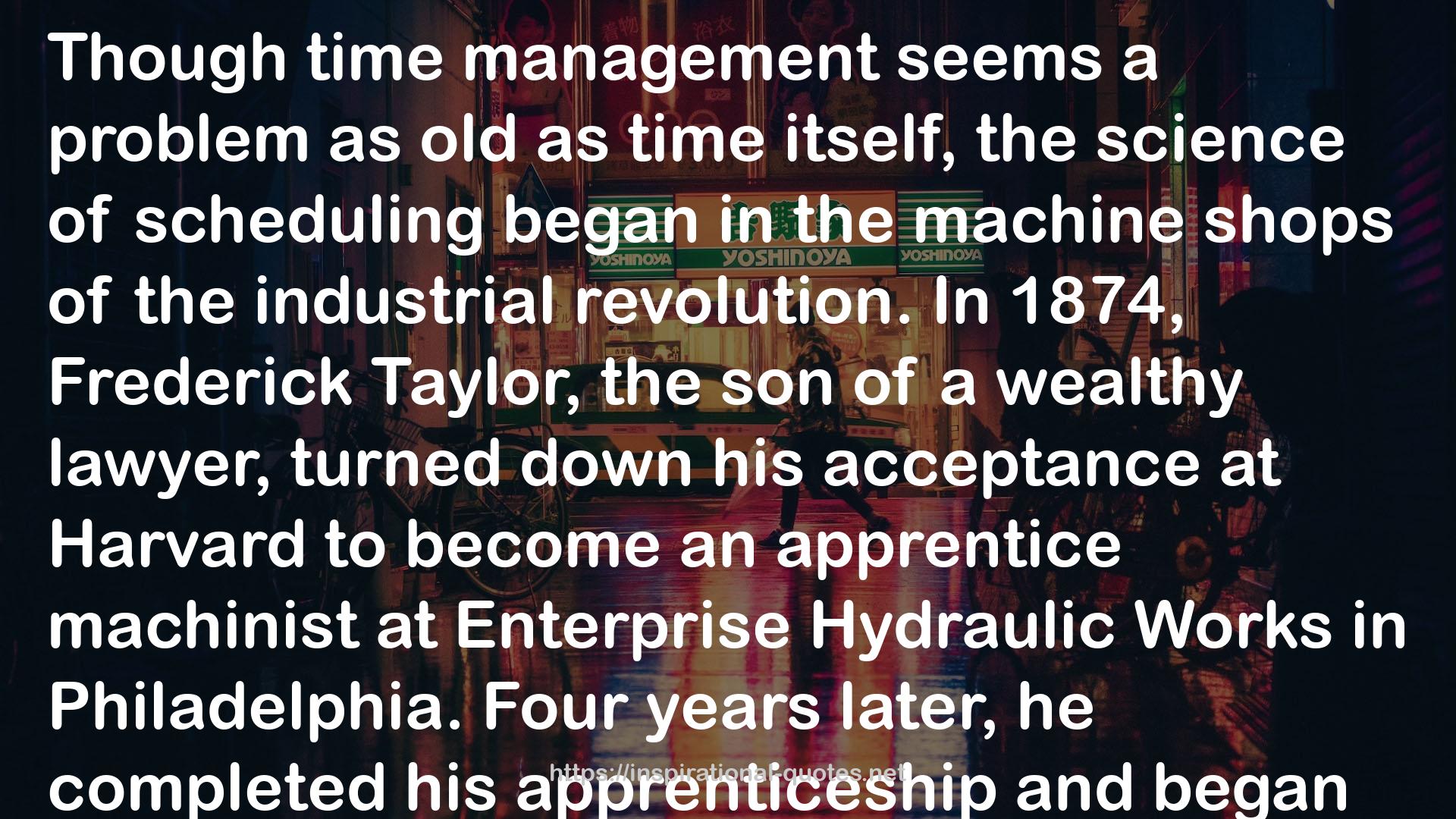" Though time management seems a problem as old as time itself, the science of scheduling began in the machine shops of the industrial revolution. In 1874, Frederick Taylor, the son of a wealthy lawyer, turned down his acceptance at Harvard to become an apprentice machinist at Enterprise Hydraulic Works in Philadelphia. Four years later, he completed his apprenticeship and began working at the Midvale Steel Works, where he rose through the ranks from lathe operator to machine shop foreman and ultimately to chief engineer. In the process, he came to believe that the time of the machines (and people) he oversaw was not being used very well, leading him to develop a discipline he called “Scientific Management.” Taylor created a planning office, at the heart of which was a bulletin board displaying the shop’s schedule for all to see. The board depicted every machine in the shop, showing the task currently being carried out by that machine and all the tasks waiting for it. This practice would be built upon by Taylor’s colleague Henry Gantt, who in the 1910s developed the Gantt charts that would help organize many of the twentieth century’s most ambitious construction projects, from the Hoover Dam to the Interstate Highway System. A century later, Gantt charts still adorn the walls and screens of project managers at firms like Amazon, IKEA, and SpaceX. "
― Brian Christian , Algorithms to Live By: The Computer Science of Human Decisions
